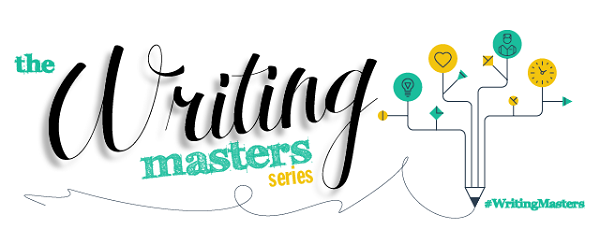
With classroom-tested tips from our Curricular Resources authors on how to improve your teaching of writing at any grade level, each Writing Masters installment will share author insights and practical suggestions on teaching writing in the classroom that you can use the very next day. This week in the Writing Master series, Ralph Fletcher goes on a ramble and promotes using the writer's notebook.
Going on a Ramble: Keeping a Writer’s Notebook
Ralph Fletcher
I’ve got a new passion: photography. Taking lots of pictures these days. One of my favorite things is to go on a “ramble.” I load my camera equipment into my car and drive. If I see an intriguing spot I stop. Sometimes I pull out my camera and take some photos. Other times I poke around a bit, find little to interest me, get back in the car, and keep driving. What I cherish is having the freedom to meander and stop wherever and whenever I want. It feels almost like being a kid again.
Going on a ramble feels similar to keeping a writer’s notebook. “Writing should be like riding a bike down a hill,” Don Murray once said. “You’re zooming along, trying to keep your balance.” I have always liked this description. I want to feel easy and comfortable and generous with myself when I write. “At ease!” I tell my troops. I cut myself some slack when I write in my notebook.
Google lets its employees devote 20% of their time to projects of their choosing. (This has led to some of their best creations, including Gmail.) I admire this idea and take it even further in my writer’s notebook, where I devote not 20% but 100% of my time and efforts on what I want to write about.
And who knows: maybe it could eventually become a book.
Self-indulgent? You bet! Lately I’ve been taking lots of photos of hummingbirds. In my notebook I’m constantly writing about them: impressions, sounds, flashes of light, facts, migratory patterns, etc. A friend who saw me jotting in my notebook asked, “Are you working on a book?” Well, no, not now. Maybe not ever. But I have learned that if I’m fascinated with a subject I can sometimes write well about it. And who knows: maybe it could eventually become a book.
My notebook is a potpourri of life-stuff, full of anecdotes, off-beat experiences, irritations, dreams, ideas for poems and books, worries, speculations, and goals. Sometimes after a wonderful dinner I might record exactly what I ate and drank. When my kids were young I used my notebook to detail the particulars of family life.
Here’s an entry I wrote when my boys were small.
I’ve noticed that Joseph and Robert go through a box of Popsicles in a definite order.
First they eat all the cotton candy
Next: bubble gum
Next: watermelon
Next: fruit punch
Next: lemonade
Next: grape
When I go to the freezer I just grab a grape Popsicle so I won’t upset anyone.
A novel by Anne Tyler has hundreds of these details, which are absolutely necessary to create fiction with a ring of truth. My writer’s notebook is crucial to my process. It’s where I gather “sleeper cells” and larvae, some of which emerge and pupate into books.
Many teachers have brought the writer’s notebook into the classroom and seen how it can help young writers. I have a special interest in nurturing boy writers, and have written several books about that subject. For boys, the writer’s notebook presents challenges as well as opportunities. If teachers stress the notebook as a diary to vent and pour out feelings, well, some boys might recoil from that idea. I have had better luck describing the notebook as a place to collect stuff: facts, stats, quips, jokes, rock lyrics, artifacts, drawings. Many boys (as well as girls) are collectors and seem to resonate with the notebook as a kind of “shoebox” for collecting.
The writer’s notebook is not “the” tool in the writing classroom, but it’s a powerful tool you’ll want your kids to have. It gives students a safe, private place where they can find their stride as writers. So much is “done to” kids in school. The writer’s notebook is a place where they can do the doing, where they can write with ease and confidence, where they can experience pleasure, and find their stride as writers.
Ralph’s resources for the writer’s notebook:
- Lessons for the Writer’s Notebook (Heinemann)
- Breathing In, Breathing Out: Keeping a Writer’s Notebook (Heinemann)
- The Writer’s Notebook: Unlocking the Writer Within You (HarperCollins)
♦ ♦ ♦ ♦
 Ralph Fletcher has been a mentor to teachers and young writers everywhere. Ralph's latest Heinemann books continue this tradition. What a Writer Needs, Second Edition mentors teachers and writers in the elements and craft of writing. Mentor Author, Mentor Texts brings inspiration to teachers and students by sharing Ralph's own writing across numerous genres plus writer's notes that reveal his thinking.
Ralph Fletcher has been a mentor to teachers and young writers everywhere. Ralph's latest Heinemann books continue this tradition. What a Writer Needs, Second Edition mentors teachers and writers in the elements and craft of writing. Mentor Author, Mentor Texts brings inspiration to teachers and students by sharing Ralph's own writing across numerous genres plus writer's notes that reveal his thinking.
♦ ♦ ♦ ♦
Next week Carol Jago shares tips on engaging the unengaged writer.
Click here to see the full Writing Masters Blog Series lineup, and, using the form below, sign up for email alerts when each new blog is posted.


